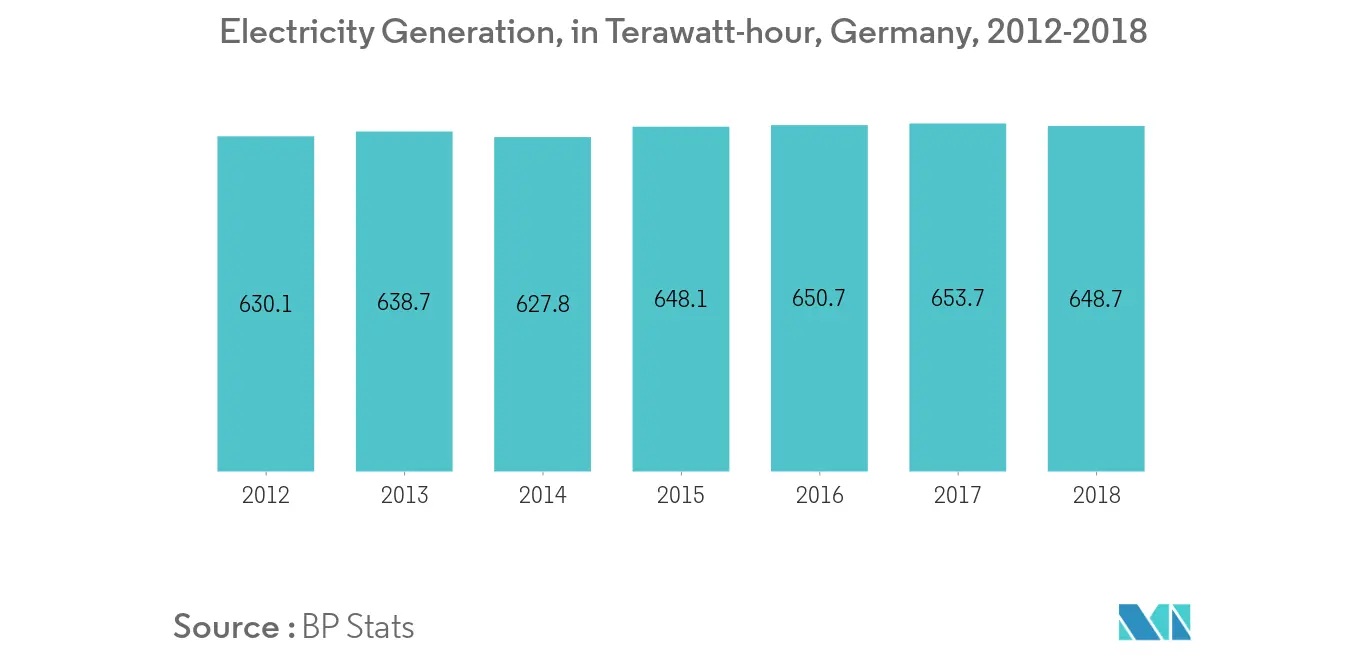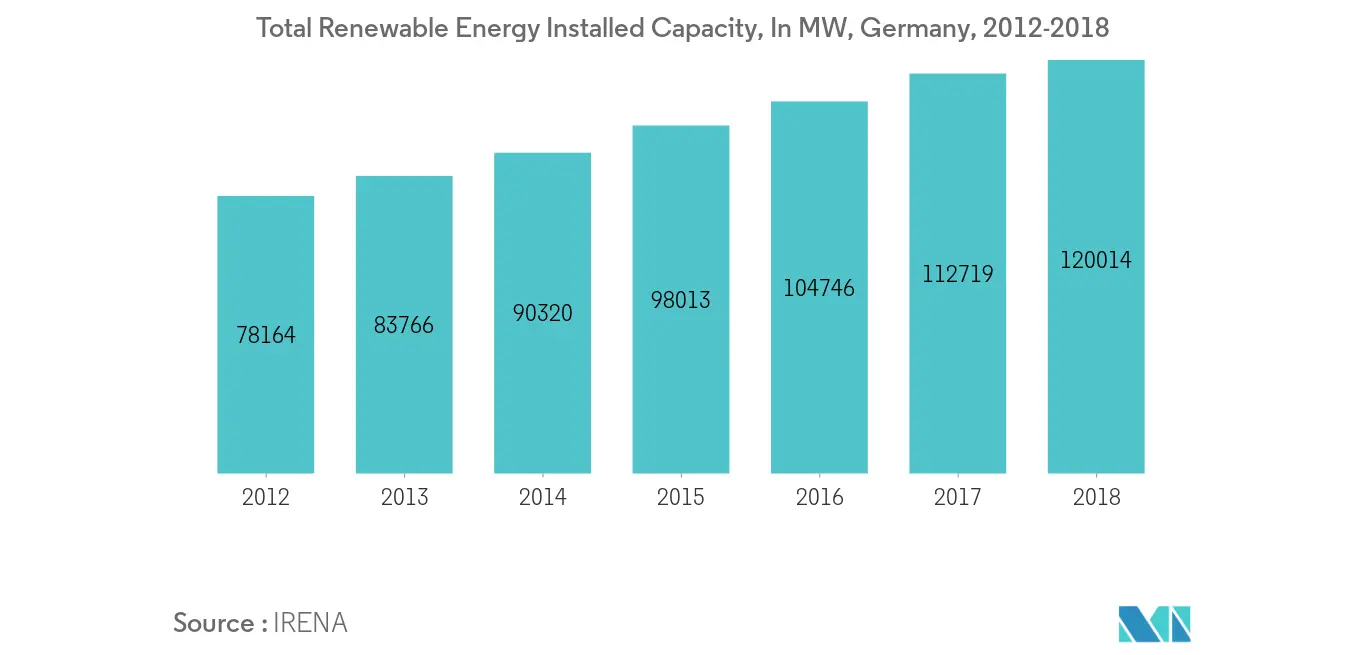Market Trends of Germany Demand Response Management Systems Industry
This section covers the major market trends shaping the Germany Demand Response Management Systems Market according to our research experts:
Automated Demand Response System to be the Fastest Growing Segment
- Industrial demand response is a dynamic energy infrastructure management program designed to support the stability of the electricity grid, as well as meet the globally growing demand for energy with the assistance of broad and extensive energy users in both the industrial and commercial sectors who agree to switch off specific production processes or turn down specific electrical loads during periods of peak demand.
- In 2018, Germany's power consumption was approximately 601 TWh, 14.04% higher than the previous year. However, the country's electricity generation saw its most significant increase in renewable power in the last five years.
- The German government wants to minimize consumption by deploying DRMS in various sectors. As of 2019, Germany did not have any national-level policies or infrastructure supporting DRMS. However, at the local level, Germany has multiple companies investing in DRMS, especially in automated demand response management systems (ADRMS), which uses the Internet of Things (IoT) to manage industrial and commercial load, as well as distributed energy resources.
- Moreover, demand-side management is the need of the hour for any grid. With a rise in smart grid technologies and automated demand response systems, DRMS is a key demand-side management strategy that is expected to provide a cost-effective alternative to traditional supply-side solutions, to address growing electricity demand during times of peak load or when prices are high.
- As of 2018, many local companies in Germany have been using DRMS, such as water treatment plants and the manufacturing industry. Currently, Germany is running a pilot project for ADRMS in populated cities to lower down the cost and electricity consumption rate. This, in turn, is expected to propel the adoption of ADRMS in Germany.
- Therefore, the German demand response management systems market is expected to grow due to the ability of automated demand response to the most significant control on electricity consumption, allowing customers to automatically manage energy consumption at times of peak demand.

Increasing Renewable Power Generation to Drive the Market
- The German electric energy system is currently undergoing a significant transformation and may continue to do so until 2050. According to the German government's goals, by 2050, the contribution of renewable energy sources may have a share of 80% in the electric energy mix.
- Germany's total renewable energy installed capacity reached 120,014 MW in 2018, majorly from wind energy. Most of the generated electricity is connected to the primary power grid of Germany, while some projects are under process.
- The increasing share of renewable energies in electricity generation is within the scope of the energy transition and may lead to a more volatile generation of electricity. More flexible energy demand could contribute to handling the resulting challenges in electricity grid management.
- Moreover, supermarkets, hotels, and office buildings can be found in regions throughout Germany. They are the most promising subsectors of the service sector regarding demand response potential, as they have a high stock in flexible cooling appliances, air conditioning, and ventilation.
- Thus, the growth in power generation from renewable energy and the profit associated from ADRMS may drive the German demand response management systems market during the forecast period.


